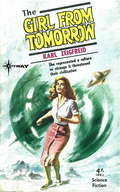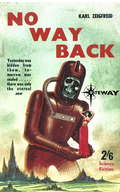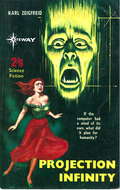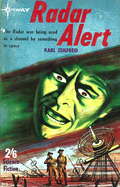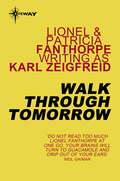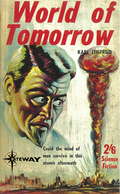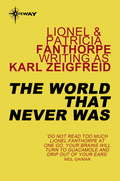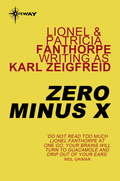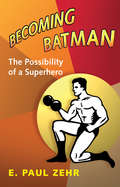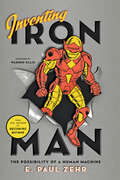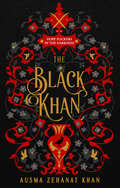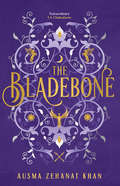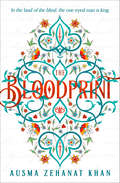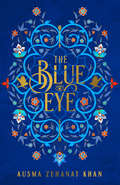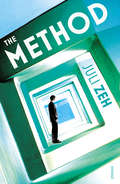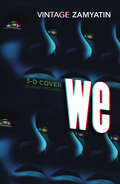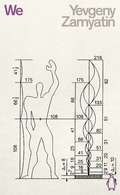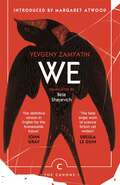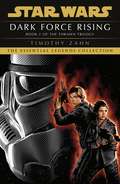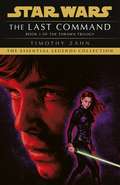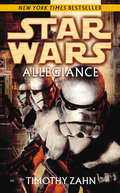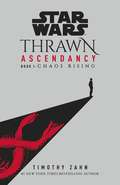- Table View
- List View
The Girl From Tomorrow
by Karl Zeigfreid Lionel Fanthorpe Patricia FanthorpeThursday began as an ordinary day as far as Estelle was concerned. Breakfast... Tube... Office... Lunch... And then the sane, sane, simple everyday world began to fade. One moment she was walking along the pleasant tree-lined familiarity of her home town... the next she was involved in a strange translucent sphere and life had turned into a nightmare. Without warning and without explanation she found herself alone in a strange new environment. There were strange stars in the unknown sky above her and the flora and fauna of her new surroundings were disturbingly unfamiliar. Most minds would have yielded to the easy escape of insanity. But Estelle Wilde was made of sterner stuff. She fought back at the strangeness of her new setting and tried desperately to establish a new set of survival data before it was too late. Piece by piece she collected her information and sat down to the mammoth task of answering the great questions. Where was she? How had she been brought there? And why? Above all... was it possible to get home?
No Way Back
by Karl Zeigfreid Lionel Fanthorpe Patricia FanthorpeAlong with progress in other spheres, criminology and remedial treatment for the socially unacceptable will undoubtedly make rapid strides in the Twenty-second and Twenty-third centuries. Purely retributive justice is not a satisfactory answer to the enlightened Welfare Officer of the Future. Psychiatry, criminology and electronic mind control could combine into an entirely new concept of reclamation. In the right hands this would be an advance into something close to Utopia - in the wrong it would be leave 1984 looking like a pleasant week-end in the country. This thoughtful new novel is a daring attempt to handle the deliucate theme of advanced criminology and the unresolved conflict of Society versus those who will not or cannot conform. Try as they will to be impersonal and humane, the psychiatrists of the future - even with electronic aids - will be as human as we are today. Their problems will be ours...
Projection Infinity
by Karl Zeigfreid Lionel Fanthorpe Patricia FanthorpeHelen Powell was a punch card operator in the test office of Elcomp, the largest and most dynamically progressive computer manufacturing company in the West. A saboteur, acting for a totalitarian regime, eluded the security network and attempted to destroy the new top secret Mark IX, the greatest computer Elcomp had ever constructed. Unfortunately for the saboteur, the Mark IX had inbuilt defence mechanisms and the secret agent died in a holocaust of high voltage sparks.From that time onwards Helen began to notice strange changes in the great electronic thinking machine. It seemed to her that the Mark IX was developing something which might almost have been described as a personality. She tried to dismiss the thoughts as imagination . . . then the face appeared . . . if it was a face! Helen saw an image on the computer's main screen. It was a face, yet not a human face in the accepted sense. The most horrible thing about it was the resemblance it bore to the dead agent.
Radar Alert
by Karl Zeigfreid Lionel Fanthorpe Patricia FanthorpeUnless life itself is a pathetic cosmic accident, man cannot be the only intelligence in the universe. It is unlikely that man is the highest intelligence. Compared to other planetary systems, our solar system is quite young. Its raw materials have barely been touched. If older intelligences wanted those raw materials only the primitive mind of man would stand in their way. Our so-called defences would perhaps aid the aliens more than aided us... Ken Andrews was a research worker in electronics. He had a sensitive mind and a vivid imagination. When he has a strange experience with the radar-screen his chief said he had been overworking. His doctor explained it as hallucination, but the so-called delusion persisted. If Ken Andrews was sane his world was in danger.... If he really was in communion with an alien intelligence, could that alien intelligence be trusted? The intriguing thought behind this story is that it could be true. It could happen today or tomorrow .... It might even have happened a few minutes ago in a top-secret research station somewhere in England...
Walk Through Tomorrow
by Karl Zeigfreid Lionel Fanthorpe Patricia FanthorpeRudolf Mallory was one of the many pathetic pieces of human flotsam on the tide of the 20th-century neurosis. He was a man who had reached the end of his rope, death seemed pleasant by comparison... He tried to take the easy way out, but something went wrong. Unknown to Mallory other men had problems too. Separated by vast distances of time and space, Rumal, citizen of an advanced humanoid society, with a strangely different technology had also decided to end it all...Time and Space are almost perfect but rare warps and blemishes do exist in the continuum. They can produce peculiar events.The Englishman from 1963 suddenly found himself on the other side of the galaxy. Rumal found himself in England. They had been unable to solve their own problems - could they solve each other's?
World of Tomorrow
by Karl Zeigfreid Lionel Fanthorpe Patricia FanthorpeEverything was ordinary. Men worked in factories and fields. Women were shopping. Children were at school. Then came the four-minute warning. Wires hummed madly between heads of governments. Just before the massive retaliation went into the air the world realised that no-one had despatched the first rocket.The retaliation was checked with seconds to spare. Experts examined the ruined city. There was something else besides radiation. Deadly bacteria from an unknown source spread across the planet. More alien bombs followed the first. But there was no real pattern in the attacks, if they were genuine attacks.At last the detectors found the alien ships. They were fighting among themselves and earth was the battle-area. Could the remnants of humanity interfere? What would be the result if they did?
The World That Never Was
by Karl Zeigfreid Lionel Fanthorpe Patricia FanthorpeHumanity played with fire once too often. It was atomic fire and its ravages produced an almost complete annihilation, but there were survivors. The radiations had not been entirely malevolent in their influence. Genes and chromosomes danced like dervishes in the gamma bombardments, and settled back into fantastic new patterns. God-like beings strode proudly athwart the devastation. Half-human demons lurked in the shadowy ruins. The twilight of humanity faded into a new heroic epoch, behind which the forbidden secrets of the ancient atom gods bided their time...
Zero Minus X
by Karl Zeigfreid Lionel Fanthorpe Patricia FanthorpeMan is an intelligent mammal. His intelligence lies in his brain. In mammals the tissues of the central nervous system are irreplaceable. The human brain contains something like 100,000,000,000,000 neurons, but 100,000 are destroyed on average each day of a man's life. Cosmic rays and general internal and external radioactivity account for most of this destruction.Hunger and Gradey decided on an illegal experiment. They brought up a small group of children in a strange artificial setting where there was practically no radiation. The setting was improved. The environment grew more shielded as generations passed. At last the Thinkers exploded into a world that had not dreamed of their existence. The world was facing other complications at the moment. An alien had appeared from the other side of the cosmos! Humanity was faced with two potentially deadly enemies; could they be turned against each other, or was one a secret friend?
Becoming Batman: The Possibility of a Superhero
by E. Paul ZehrBattling bad guys. High-tech hideouts. The gratitude of the masses. Who at some point in their life hasn't dreamed of being a superhero? Impossible, right? Or is it?Possessing no supernatural powers, Batman is the most realistic of all the superheroes. His feats are achieved through rigorous training and mental discipline, and with the aid of fantastic gadgets. Drawing on his training as a neuroscientist, kinesiologist, and martial artist, E. Paul Zehr explores the question: Could a mortal ever become Batman? Zehr discusses the physical training necessary to maintain bad-guy-fighting readiness while relating the science underlying this process, from strength conditioning to the cognitive changes a person would endure in undertaking such a regimen. In probing what a real-life Batman could achieve, Zehr considers the level of punishment a consummately fit and trained person could handle, how hard and fast such a person could punch and kick, and the number of adversaries that individual could dispatch. He also tells us what it would be like to fight while wearing a batsuit and the amount of food we'd need to consume each day to maintain vigilance as Gotham City's guardian.A fun foray of escapism grounded in sound science, Becoming Batman provides the background for attaining the realizable—though extreme—level of human performance that would allow you to be a superhero.
Inventing Iron Man: The Possibility of a Human Machine
by E. Paul ZehrTony Stark has been battling bad guys and protecting innocent civilians since he first donned his mechanized armor in the 1963 debut of Iron Man in Marvel Comics. Over the years, Stark’s suit has allowed him to smash through walls, fly through the air like a human jet, control a bewildering array of weaponry by thought alone, and perform an uncountable number of other fantastic feats. The man who showed us all what it would take to become Batman probes whether science—and humankind—is up to the task of inventing a real-life Iron Man.E. Paul Zehr physically deconstructs Iron Man to find out how we could use modern-day technology to create a suit of armor similar to the one Stark made. Applying scientific principles and an incredibly creative mind to the question, Zehr looks at how Iron Man’s suit allows Stark to become a superhero. He discusses the mind-boggling and body-straining feats Iron Man performed to defeat villains like Crimson Dynamo, Iron Monger, and Whiplash and how such acts would play out in the real world. Zehr finds that science is nearing the point where a suit like Iron Man’s could be made. But superherodom is not just about technology. Zehr also discusses our own physical limitations and asks whether an extremely well-conditioned person could use Iron Man’s armor and do what he does.A scientifically sound look at brain-machine interfaces and the outer limits where neuroscience and neural plasticity meet, Inventing Iron Man is a fun comparison between comic book science fiction and modern science. If you’ve ever wondered whether you have what it takes to be the ultimate human-machine hero, then this book is for you.
Inventing Iron Man: The Possibility of a Human Machine
by E. Paul ZehrTony Stark has been battling bad guys and protecting innocent civilians since he first donned his mechanized armor in the 1963 debut of Iron Man in Marvel Comics. Over the years, Stark’s suit has allowed him to smash through walls, fly through the air like a human jet, control a bewildering array of weaponry by thought alone, and perform an uncountable number of other fantastic feats. The man who showed us all what it would take to become Batman probes whether science—and humankind—is up to the task of inventing a real-life Iron Man.E. Paul Zehr physically deconstructs Iron Man to find out how we could use modern-day technology to create a suit of armor similar to the one Stark made. Applying scientific principles and an incredibly creative mind to the question, Zehr looks at how Iron Man’s suit allows Stark to become a superhero. He discusses the mind-boggling and body-straining feats Iron Man performed to defeat villains like Crimson Dynamo, Iron Monger, and Whiplash and how such acts would play out in the real world. Zehr finds that science is nearing the point where a suit like Iron Man’s could be made. But superherodom is not just about technology. Zehr also discusses our own physical limitations and asks whether an extremely well-conditioned person could use Iron Man’s armor and do what he does.A scientifically sound look at brain-machine interfaces and the outer limits where neuroscience and neural plasticity meet, Inventing Iron Man is a fun comparison between comic book science fiction and modern science. If you’ve ever wondered whether you have what it takes to be the ultimate human-machine hero, then this book is for you.
The Black Khan: Book Two Of The Khorasan Archives (The Khorasan Archives #2)
by Ausma Zehanat KhanBook two of Ausma Zehanat Khan’s powerful, unforgettable new series, The Khorasan Archives.
The Bladebone: Book Four Of The Khorasan Archives (The Khorasan Archives #4)
by Ausma Zehanat KhanThe fourth and final instalment in Ausma Zehanat Khan's powerful epic fantasy quartet: a series that lies somewhere between N. K. Jemisin and George R.R. Martin, in which a powerful band of women must use all the powers at their disposal to defeat a dark and oppressive, patriarchal regime
The Bloodprint (The Khorasan Archives #1)
by Ausma Zehanat KhanThe author of the acclaimed mystery The Unquiet Dead delivers her first fantasy novel—the opening installment in a thrilling quartet—a tale of religion, oppression, and political intrigue that radiates with heroism, wonder, and hope.
The Blue Eye: The Khorasan Archives, Book 3 (The Khorasan Archives #3)
by Ausma Zehanat KhanThird instalment in Ausma Zehanat Khan's powerful epic fantasy quartet: a series that lies somewhere between N. K. Jemisin and George R.R. Martin, in which a powerful band of women must use all the powers at their disposal to defeat a dark and oppressive, patriarchal regime
The Method
by Juli Zeh Sally-Ann SpencerMia Holl lives in a state governed by The Method, where good health is the highest duty of the citizen. Everyone must submit medical data and sleep records to the authorities on a monthly basis, and regular exercise is mandatory.Mia is young and beautiful, a successful scientist who is outwardly obedient but with an intellect that marks her as subversive. Convinced that her brother has been wrongfully convicted of a terrible crime, Mia comes up against the full force of a regime determined to control every aspect of its citizens' lives.
We: Introduction by Will Self (Momentum Classics Ser.)
by Yevgeny Zamyatin Will Self Natasha RandallWITH AN INTRODUCTION BY WILL SELFThe citizens of the One State live in a condition of 'mathematically infallible happiness'. D-503 decides to keep a diary of his days working for the collective good in this clean, blue city state where nature, privacy and individual liberty have been eradicated. But over the course of his journal D-503 suddenly finds himself caught up in unthinkable and illegal activities - love and rebellion.Banned on its publication in Russia in1921, We is the first modern dystopian novel and a satire on state control that has once again become chillingly relevant.
We: New Edition (Penguin Science Fiction)
by Yevgeny Zamyatin'The best single work of science fiction yet written' Ursula K. Le GuinThe dystopian masterwork that inspired George Orwell's Nineteen Eighty-Four, We depicts a futuristic totalitarian society, 'OneState', where humans have become numbers. Suppressed in Russia for decades, it is a chilling vision of a world enslaved by technology.'Zamyatin's parable looked forward to climate change and surveillance culture ... to peer into its future is to see modernity's reflection gazing darkly back' Economist
We: Uproar Books Classics Series (Canons)
by Yevgeny ZamyatinThe One State is the perfect society, ruled over by the enlightened Benefactor. It is a city made almost entirely of glass, where surveillance is universal and life runs according to algorithmic rules to ensure perfect happiness. And D-503, the Builder, is the ideal citizen, at least until he meets I-330, who opens his eyes to new ideas of love, sex and freedom. A foundational work of dystopian fiction, inspiration for both Orwell’s Nineteen Eighty-Four and Huxley’s Brave New World, WE is a book of radical imaginings – of control and rebellion, surveillance and power, machine intelligence and human inventiveness, sexuality and desire. In this brilliant new translation, it is both a warning and a hope for a better world.
The Goths & Other Stories
by Tis Kaoru Zamler-CarhartIn the winter of 476 AD, the Ostrogoths, hungry and exhausted from wandering for months along the barren confines of the Byzantine Empire, wrote to Emperor Zeno in Constantinople requesting permission to enter the walled city of Epidaurum and just kinda crash and charge their phones. Closer to home, Orpheus walks Eurydice through a suburban refrigerator, Abidjan has 12,756 streets with no way to go from one to another, and the poetics of car accidents, capitalist consumption, and anarchist terrorism unfold at a Southern California car dealership. Readers of all centuries will feel at home in this book, as an apocalypse of tax law and classical mythology quietly descends upon their living room and reveals a medieval theology of design, theater, and light. The Goths and Other Stories is a collection of short works at the intersection of prose fiction, experimental poetry, philosophy, and design theory. The book’s six stories are set in different times and places—sometimes within the same narrative—but have in common a slippery approach to the boundaries between fiction and theory, between ontological planes, between the comical and the moral. Together they also form a treatise on the nature of writing as a branch of design—one whose medium is easier to reveal than to define.
The Goths & Other Stories
by Sasha Kaoru Zamler-CarhartIn the winter of 476 A.D. the Ostrogoths, hungry and exhausted from wandering for months along the barren confines of the Byzantine Empire, wrote to Emperor Zeno in Constantinople requesting permission to enter the walled city of Epidaurum and just kinda crash and charge their phones. Closer to home, Orpheus walks Eurydice through a suburban refrigerator as a matter of tax planning. In The Goths & Other Stories, sexual desire, food, space, and anger are distorted; prose fiction, experimental poetry, philosophy, and design theory intersect and breed. The poetics of car accidents, capitalist consumption, and anarchist terrorism unfold at a Southern California car dealership. Readers of all centuries will feel at home in this book. The smell of seafood and speculative urban planning merge into a 1990s computer game, Abidjan has 12,756 streets with no way to go from one to another, an apocalypse of tax law and classical mythology descends upon suburbia and reveals a medieval theology of design, theater, and light. The book’s six stories are set in different times and places – sometimes within the same narrative – but have in common a slippery approach to the boundaries between fiction and theory, between ontological planes, between the comical and the moral. Together they also form a treatise on the nature of writing as a branch of design – one whose medium is easier to reveal than to define.
Dark Force Rising: Book 2 (Star Wars Thrawn trilogy) (Star Wars #Vol. 2)
by Timothy Zahn__________________________________The second book in the legendary Thrawn TrilogyThe dying Empire's most cunning and ruthless warlord, Grand Admiral Thrawn, has taken command of the remnants of the Imperial fleet and launched a massive campaign aimed at the New Republic's destruction. Meanwhile, Han Solo and Lando Calrissian race against time to find proof of treason inside the highest Republic Council-only to discover instead a ghostly fleet of warships that could bring doom to their friends and victory to their enemies.Yet most dangerous of all is a new Dark Jedi, risen from the ashes of a shrouded past, consumed by bitterness, and scheming to corrupt Luke Skywalker to the dark side.
The Last Command: Book 3 (Star Wars Thrawn trilogy) (Star Wars: The Thrawn Trilogy Ser. #3)
by Timothy Zahn__________________________________The final book in the legendary Thrawn TrilogyThe embattled Republic reels from the attacks of Grand Admiral Thrawn, who has marshaled the remnants of the Imperial forces and driven the Rebels back with an abominable technology recovered from the Emperor's secret fortress: clone soldiers. As Thrawn mounts his final siege, Han Solo and Chewbacca struggle to form a coalition of smugglers for a last-ditch attack, while Princess Leia holds the Alliance together and prepares for the birth of her Jedi twins.The Republic has one last hope-sending a small force into the very stronghold that houses Thrawn's terrible cloning machines. There a final danger awaits, as the Dark Jedi C'baoth directs the battle against the Rebels and builds his strength to finish what he already started: the destruction of Luke Skywalker.
Star Wars: Allegiance (Star Wars #3)
by Timothy ZahnA Star Wars novel set between the events of Epsiode IV: A New Hope and Epsiode V: The Empire Strikes Back, it features a younger Han, Leia, and Luke, as well as Mara Jade. Mara Jade, the Emperor's Hand, is looking into the illicit financial affairs of a planetary governor, hoping to find evidence that he might be funding the Rebellion. Luke, Han, and Chewbacca are sent on a mission to help some rebel supporters. Leia is busy being a diplomat, trying to drum up support for the Rebel Alliance. And a band of 5 stormtroopers, on the run after refusing a direct order, finds itself in the strange position of doing good deeds...and perhaps even aiding the Rebellion. The paths of all of them will crisscross back and forth as they come closer and closer to meeting up with one another...but never quite managing to.
Star Wars: (Book 1: Chaos Rising) (Thrawn Ascendency #1)
by Timothy Zahn_____________________________________Discover Thrawn’s origins within the Chiss Ascendancy in the first book in an epic new Star Wars trilogy from bestselling author Timothy Zahn.Beyond the edge of the galaxy lies the Unknown Regions: chaotic, uncharted, and near impassable, with hidden secrets and dangers in equal measure. And nestled within its swirling chaos is the Ascendancy, home to the enigmatic Chiss and the Nine Ruling Families that lead them.The peace of the Ascendancy, a beacon of calm and stability, is shattered after a daring attack on the Chiss capital that leaves no trace of the enemy. Baffled, the Ascendancy dispatches one of its brightest young military officers to root out the unseen assailants. A recruit born of no title, but adopted into the powerful family of the Mitth and given the name Thrawn.With the might of the Expansionary Fleet at his back, and the aid of his comrade Admiral Ar’alani, answers begin to fall into place. But as Thrawn’s first command probes deeper into the vast stretch of space his people call the Chaos, he realizes that the mission he has been given is not what it seems. And the threat to the Ascendancy is only just beginning.
